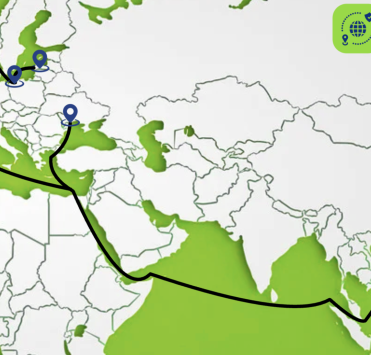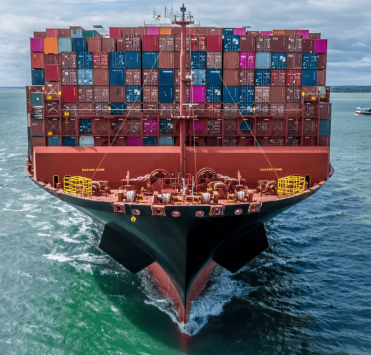Conditions of transportation of pesticides and agrochemicals

The transportation of agrochemicals is no simple task. The transport of pesticides in Ukraine is vital for modern agriculture but must be carried out under specific conditions.
What are pesticides and what types exist?
The delivery of fertilizers for crops requires special attention to safety and strict adherence to transport regulations. Pesticides are chemical or biological substances used to control pests, plant diseases, and weeds. Their use in agriculture significantly boosts crop yields but also poses potential risks to the environment and human health.
There are several main types of pesticides:
- Insecticides: Designed to combat harmful insects. The most common classes include organophosphates, carbamates, and pyrethroids. Insecticides can be up to 95-98% effective when used correctly.
- Herbicides: Used to eliminate weeds. There are selective herbicides (targeting specific plants) and total herbicides (destroying all vegetation). Their use can increase yields by 20-40%.
- Fungicides: Fight fungal diseases in plants. Modern fungicides provide protection for 14-21 days after treatment.
- Rodenticides: Used against rodents. Their effectiveness can reach 99% when applied properly.
- Nematicides: Target roundworms. The use of nematicides can increase yields by 15-30% in infected areas.
Each type of pesticide has its own specific chemical composition, which defines the requirements for its transport, storage, and application.
How are pesticides and agrochemicals classified?
Understanding what pesticides are and their dangers can be aided by the classification of these substances. The main classification criteria include:
- Toxicity: The World Health Organization (WHO) categorizes pesticides into four toxicity classes:
- Class Ia: Extremely hazardous
- Class Ib: Highly hazardous
- Class II: Moderately hazardous
- Class III: Slightly hazardous
- Chemical Composition: Pesticides are classified as organic (carbon-based) or inorganic. Organic pesticides make up about 95% of all pesticides used.
- Mode of Action:
- Contact (work on contact)
- Systemic (penetrate the plant)
- Fumigants (act through respiratory pathways)
- Origin:
- Synthetic (artificially created)
- Biological (based on natural components)
- Purpose (e.g., insecticides, herbicides, fungicides)
Agrochemicals are classified by:
- Origin (mineral, organic, organomineral)
- Composition (nitrogenous, phosphorous, potassium, complex)
- Physical State (solid, liquid, gaseous)
Understanding these classifications is critical for organizing the safe transportation of agrochemicals.
How are the conditions for the transportation of pesticides and agrochemicals determined?
The conditions for transporting agrochemicals and pesticides by road depend on their physical-chemical properties, hazard class, and batch size. Key factors include:
- Hazard Class: According to the international classification of dangerous goods (ADR), most pesticides belong to Class 6.1 (toxic substances). This determines the labeling, packaging, and vehicle requirements.
- Temperature: Many pesticides are sensitive to extreme temperatures. For example, some insecticides lose their effectiveness above +30°C, while herbicides may crystallize at low temperatures. As a result, vehicles with climate control are often required.
- Humidity: The hygroscopic nature of many agrochemicals requires protection from moisture. Moisture-proof packaging is used, and vehicles must have humidity control systems.
- Compatibility: Certain types of pesticides and agrochemicals cannot be transported together due to the risk of chemical reactions. For example, oxidizers cannot be placed near organic pesticides.
- Batch Size: Large batches require specialized tankers or container tanks, while small batches are transported in special containers on regular trucks, adhering to fastening regulations.
- Physical State: Liquid pesticides require sealed containers resistant to impacts, while powdered substances need protection from dispersion.
Transportation Route: The route must account for the presence of populated areas, water bodies, and protected natural areas. In some cases, special routes must be developed.
Safety rules for transporting pesticides and agrochemicals
The transportation of herbicides, other pesticides, and agrochemicals requires strict adherence to safety rules:
- Packaging: Special packaging is used, resistant to mechanical damage and chemically inert to its contents. Liquid pesticides are stored in hermetically sealed high-density polyethylene canisters or drums, while powdered substances are packed in multi-layer bags with a moisture-resistant layer.
- Labeling: Every cargo unit must have clear labeling indicating the substance's name, toxicity class, and hazard symbols. Standard hazard pictograms approved by the Globally Harmonized System of Classification and Labelling of Chemicals (GHS) are used.
- Documentation: A safety data sheet (SDS) must be available, containing information on the substance's properties, first aid measures, and handling instructions. For international transport, special permits are required.
- Vehicle Equipment: Vehicles must be equipped with fire extinguishing systems, personal protective equipment for the driver, and spill kits. The cab must be separated from the cargo area by a sealed partition.
- Personnel Qualifications: Drivers transporting pesticides by road must have specialized training confirmed by an ADR certificate (European Agreement concerning the International Carriage of Dangerous Goods by Road).
- Monitoring: During transport, temperature and humidity in the cargo area are continuously monitored. Modern systems allow real-time tracking of these parameters.
- Emergency Response Plan: A detailed action plan is developed for accidents, spills, and fires, with regular staff training.
- Movement Restrictions: Transport is carried out along pre-approved routes, avoiding residential areas and water bodies. In some cases, escort services are required.
- Vehicle Cleaning: After transporting dangerous goods, the vehicles are thoroughly cleaned and decontaminated. Special cleaning agents are used to neutralize pesticide residues.
- Waste Disposal: All waste generated during transportation (damaged packaging, used cleaning materials) must be disposed of in accordance with environmental regulations.
Following these rules minimizes the risks associated with transporting pesticides and agrochemicals, ensuring the safety of people and the environment. Statistics show that strict adherence to safety protocols reduces the risk of incidents during transport by 95-97%.









